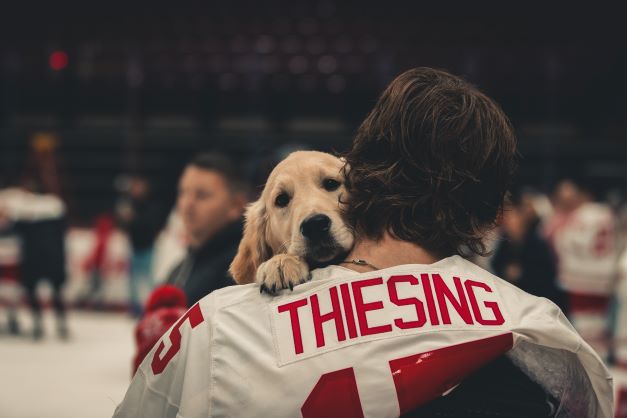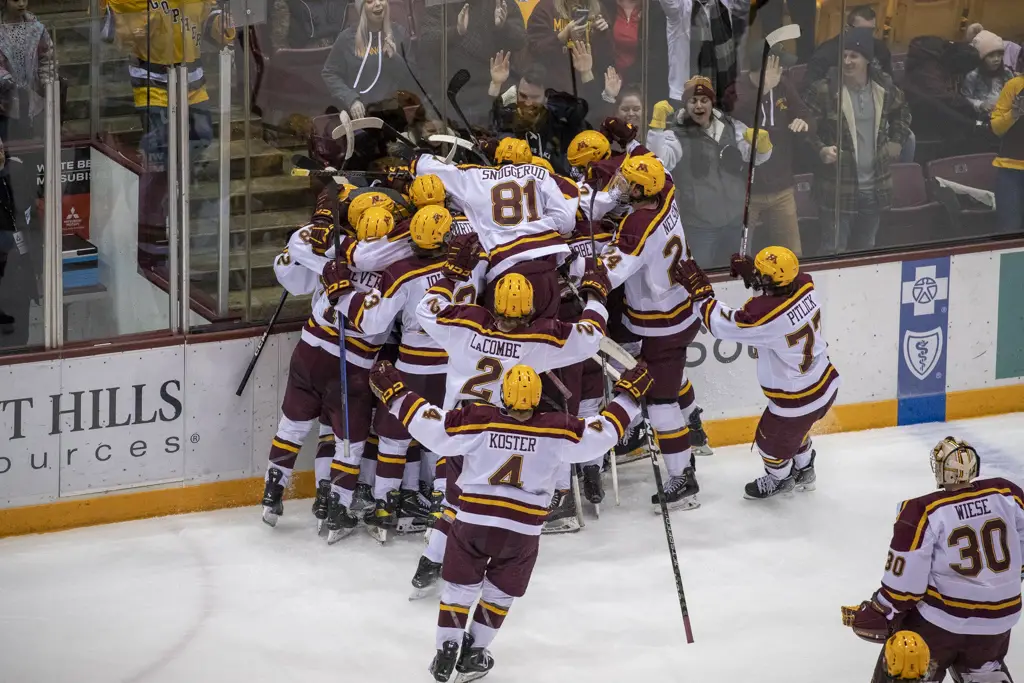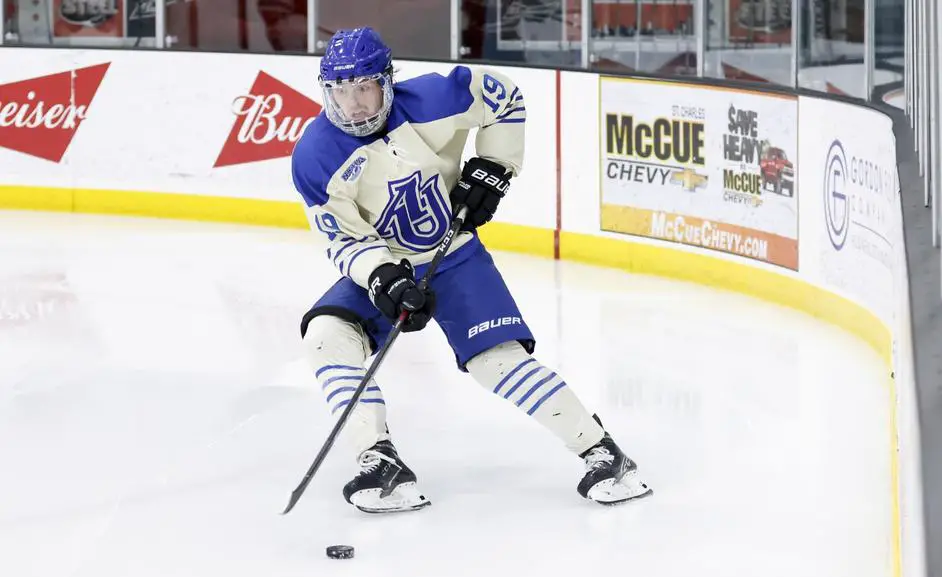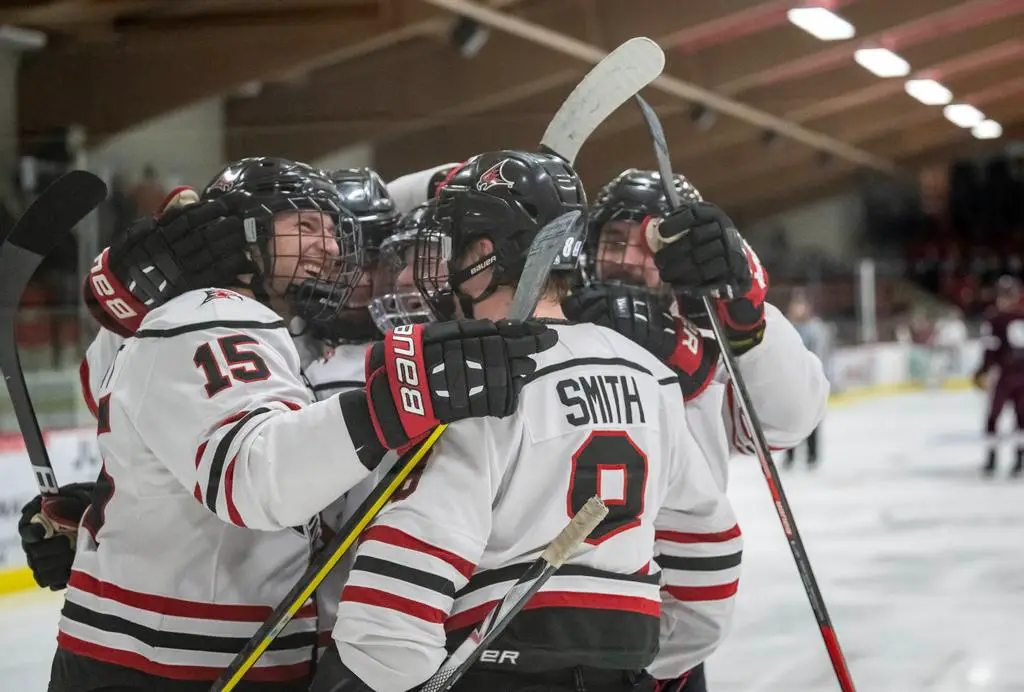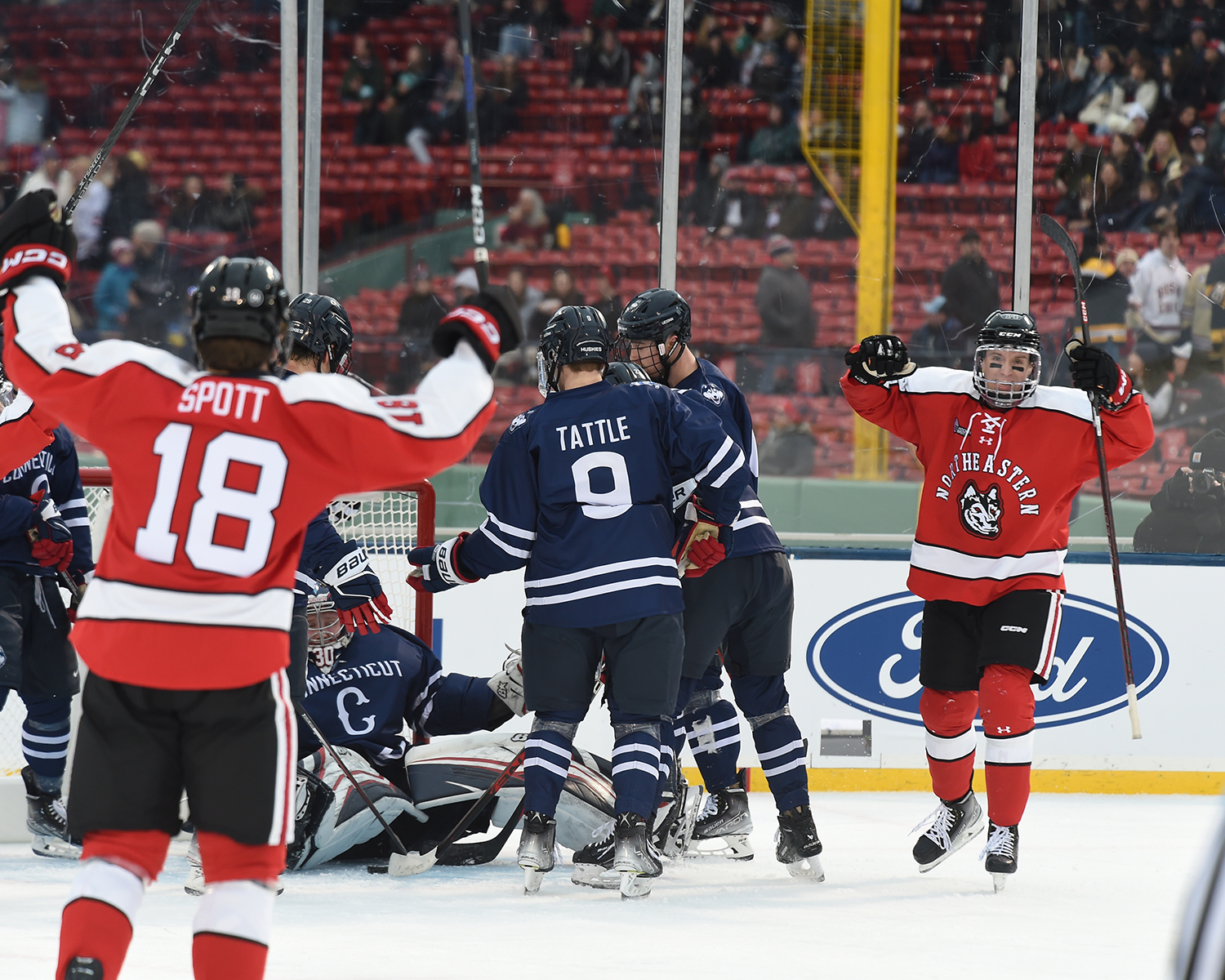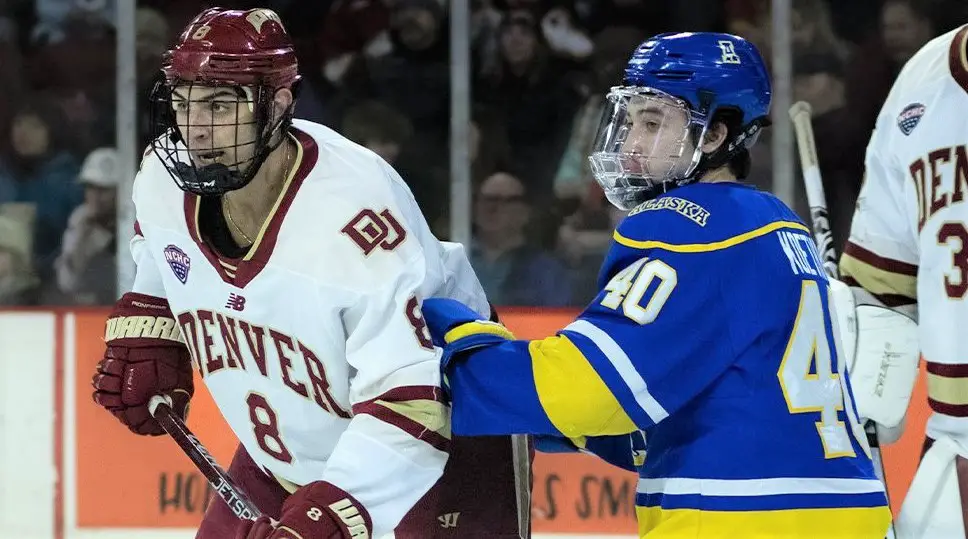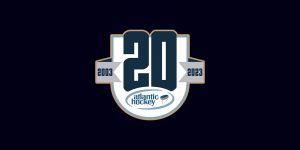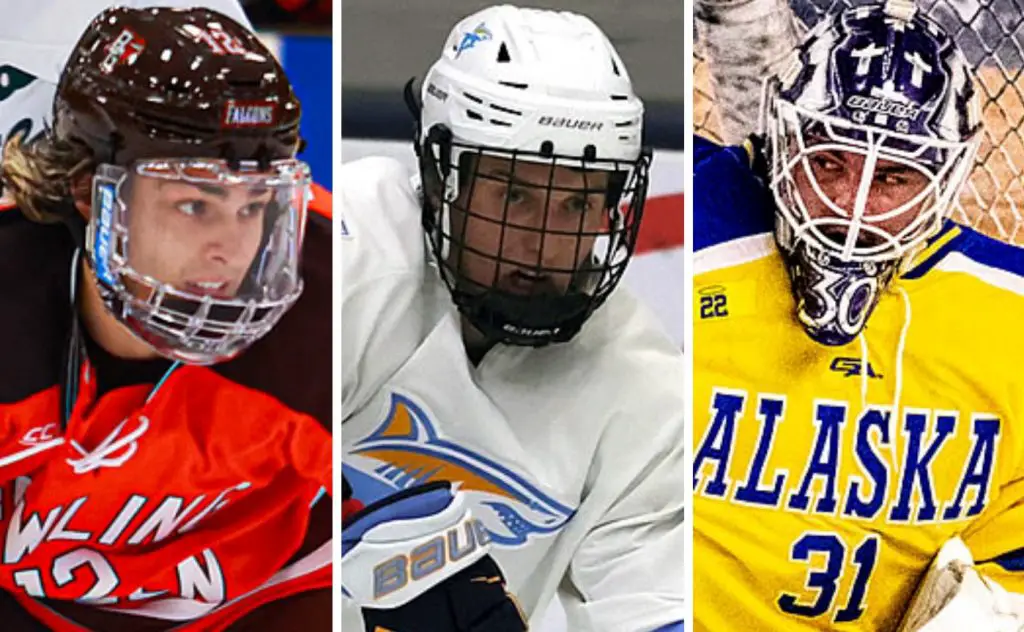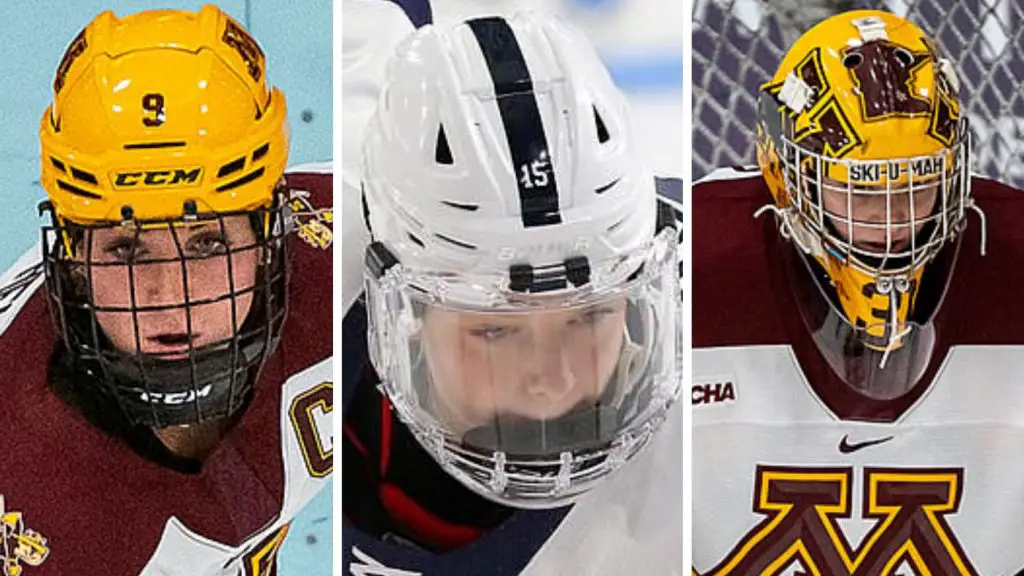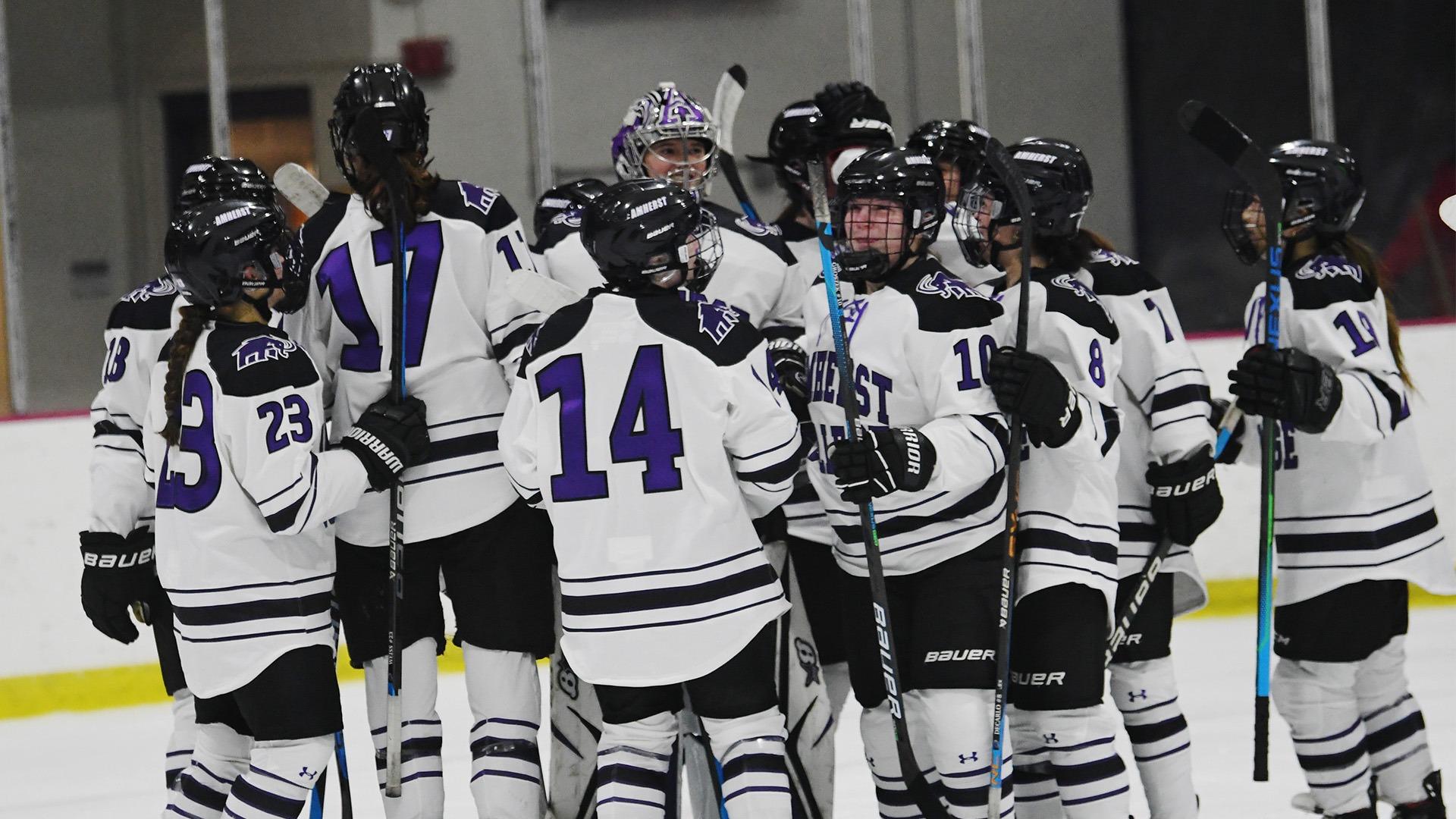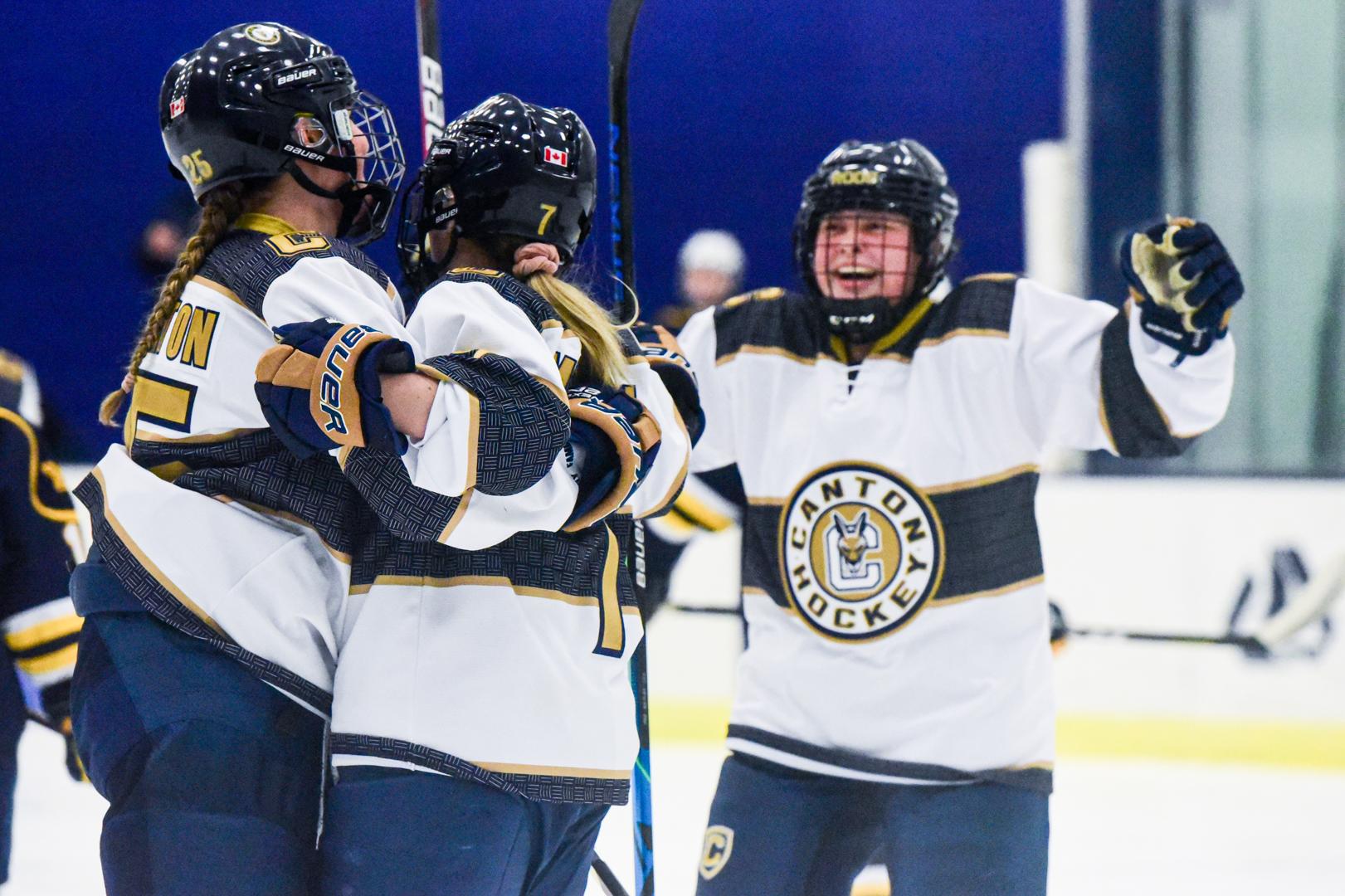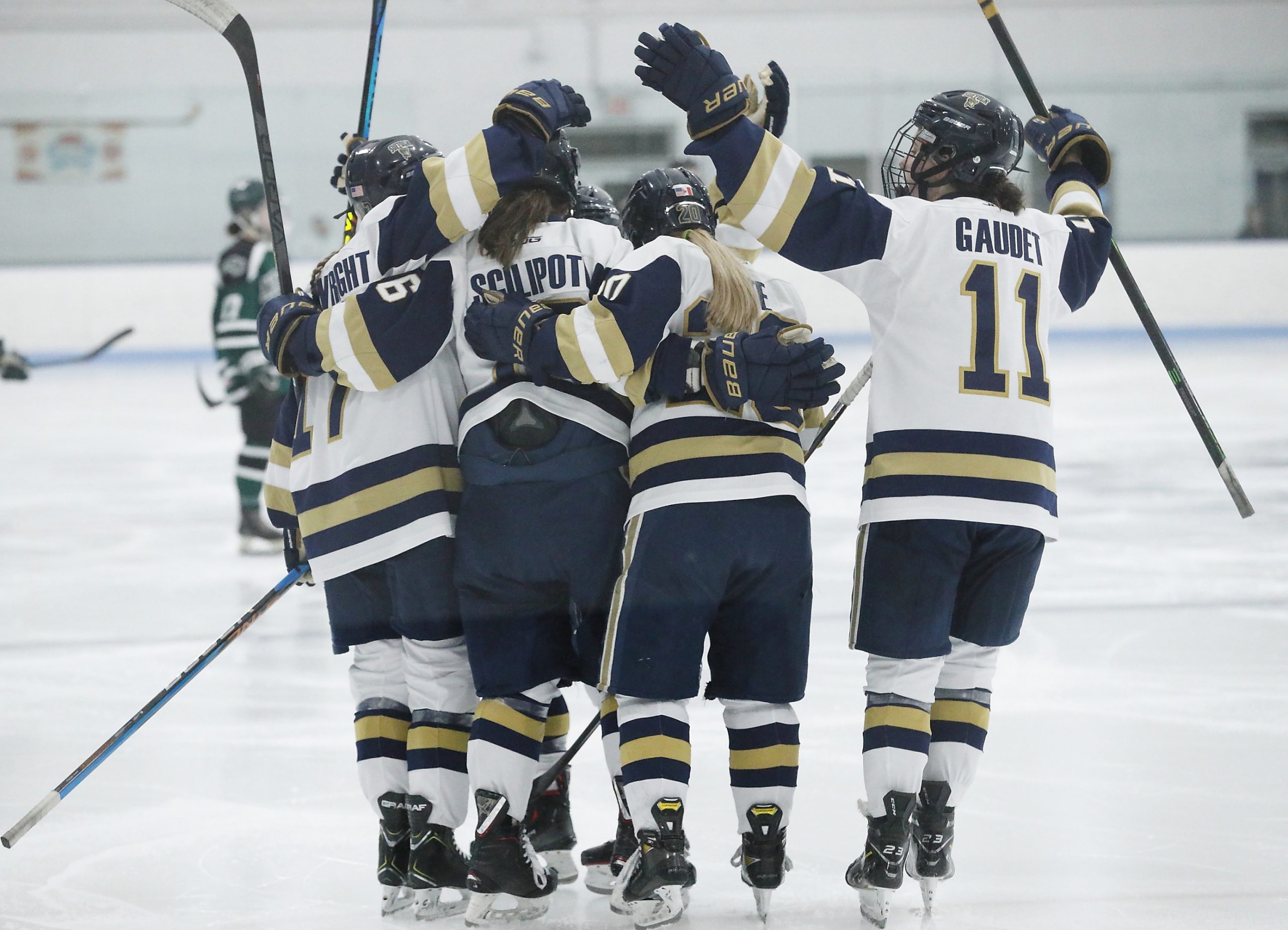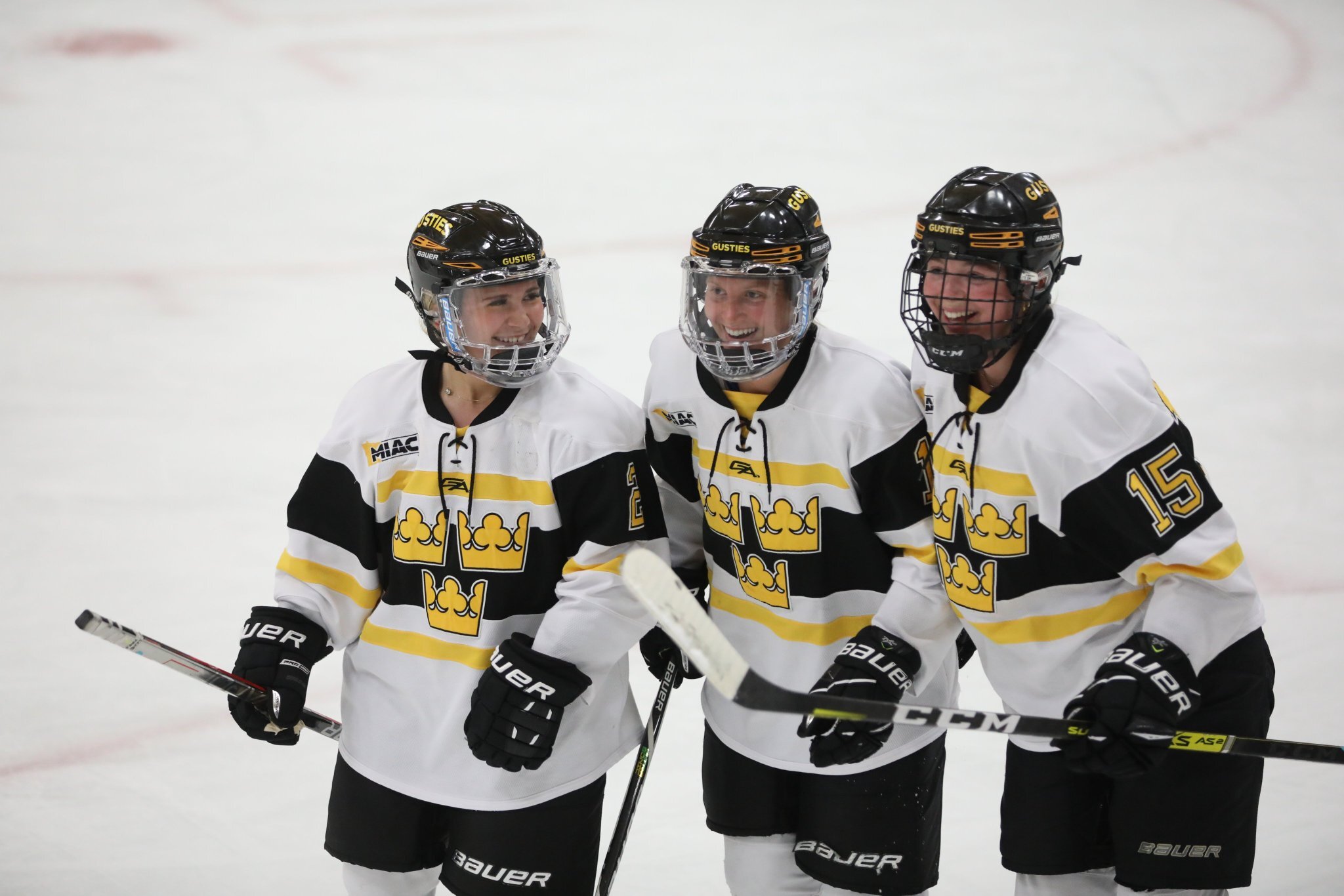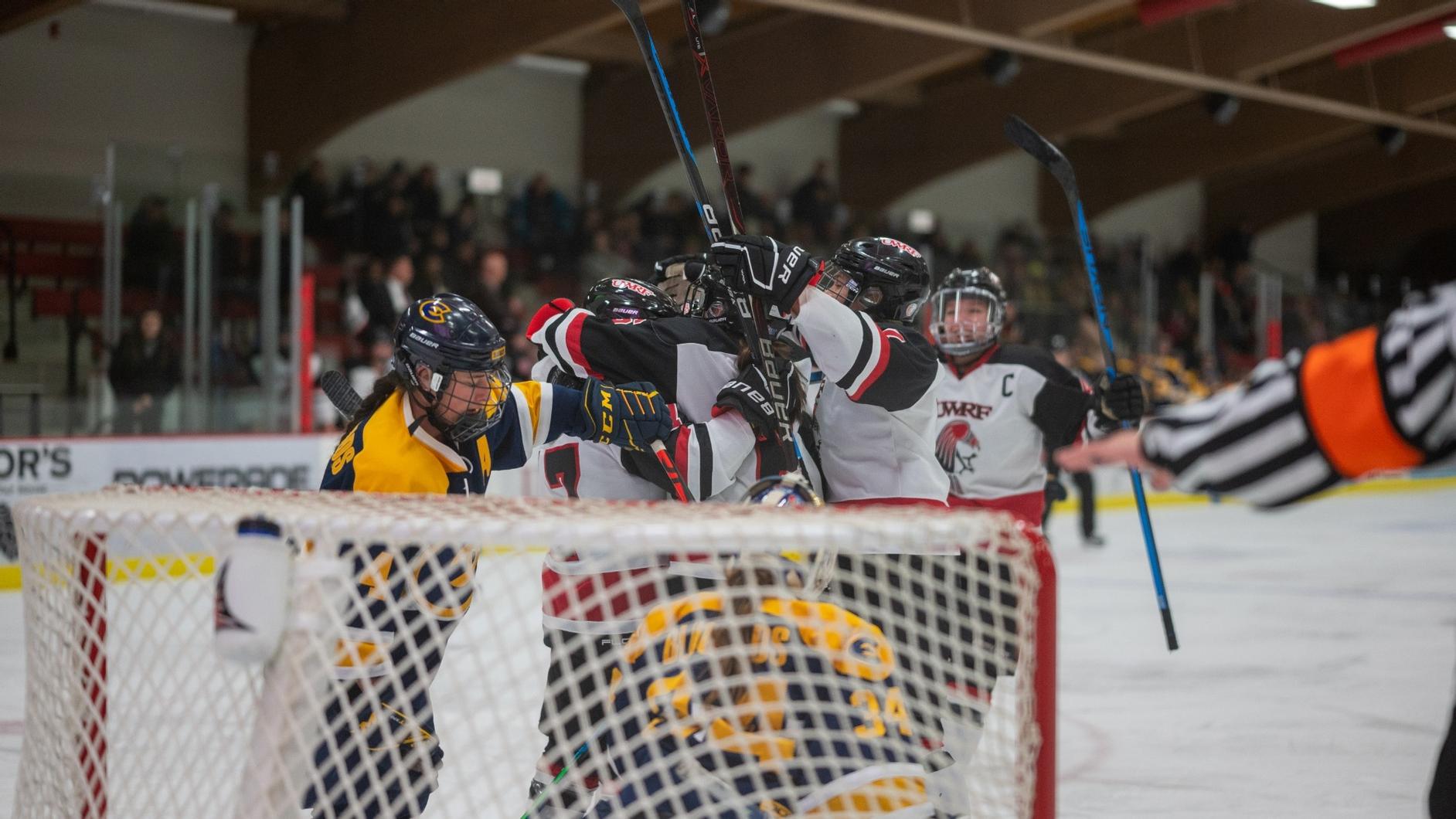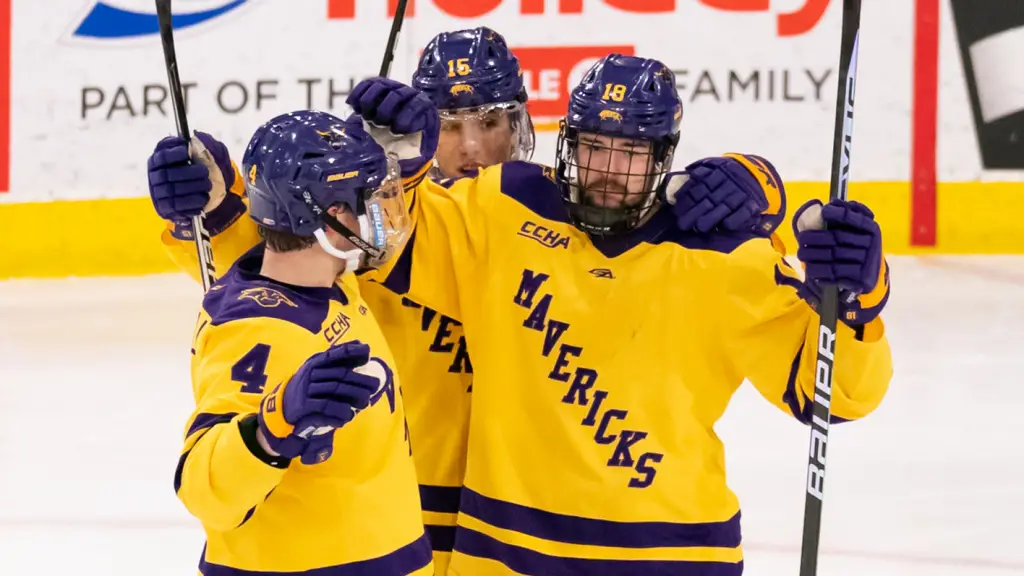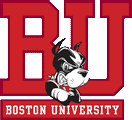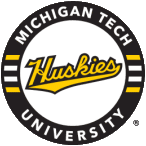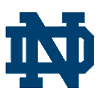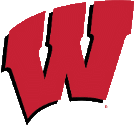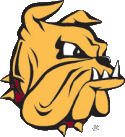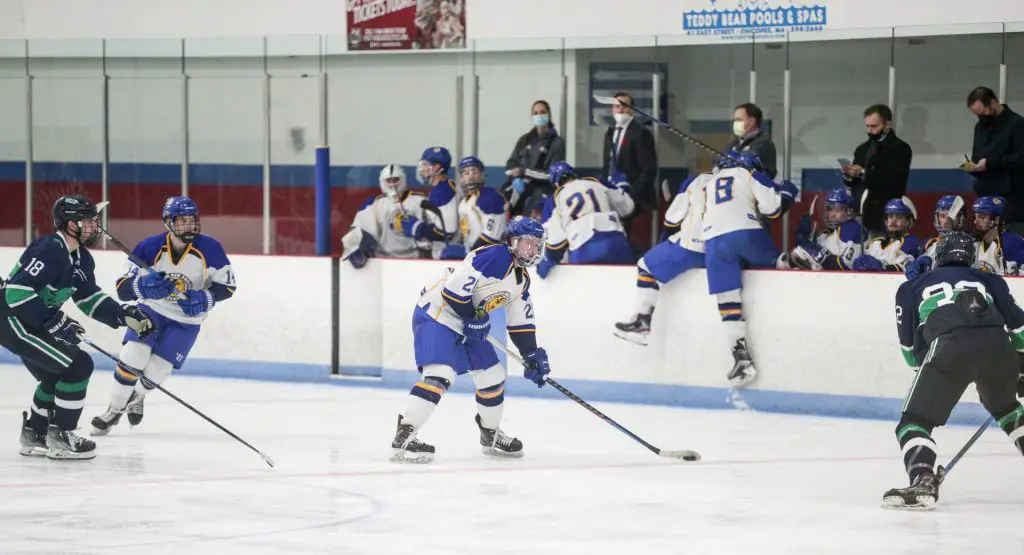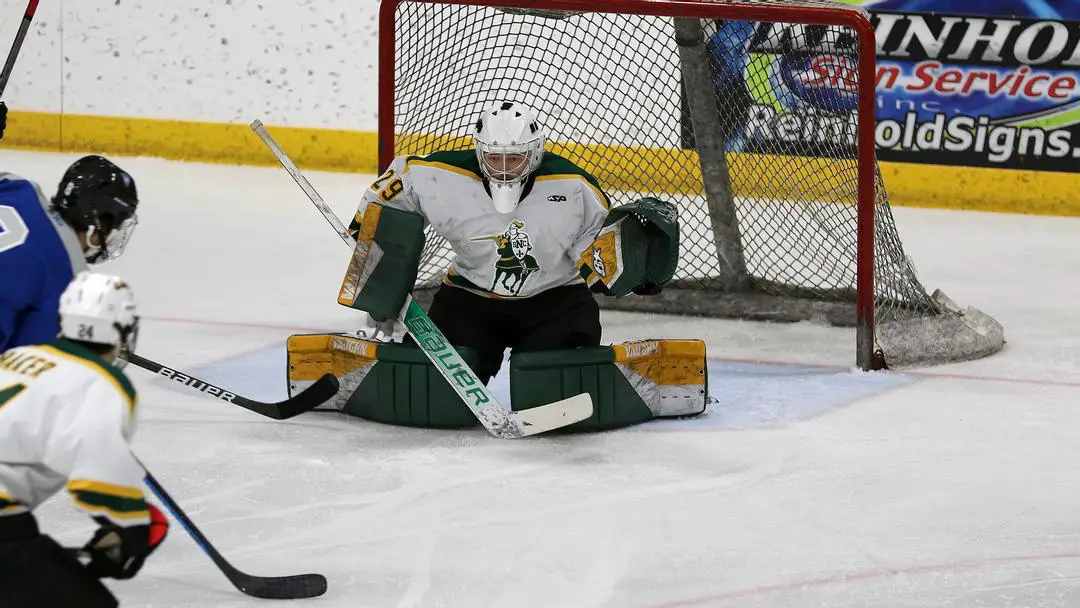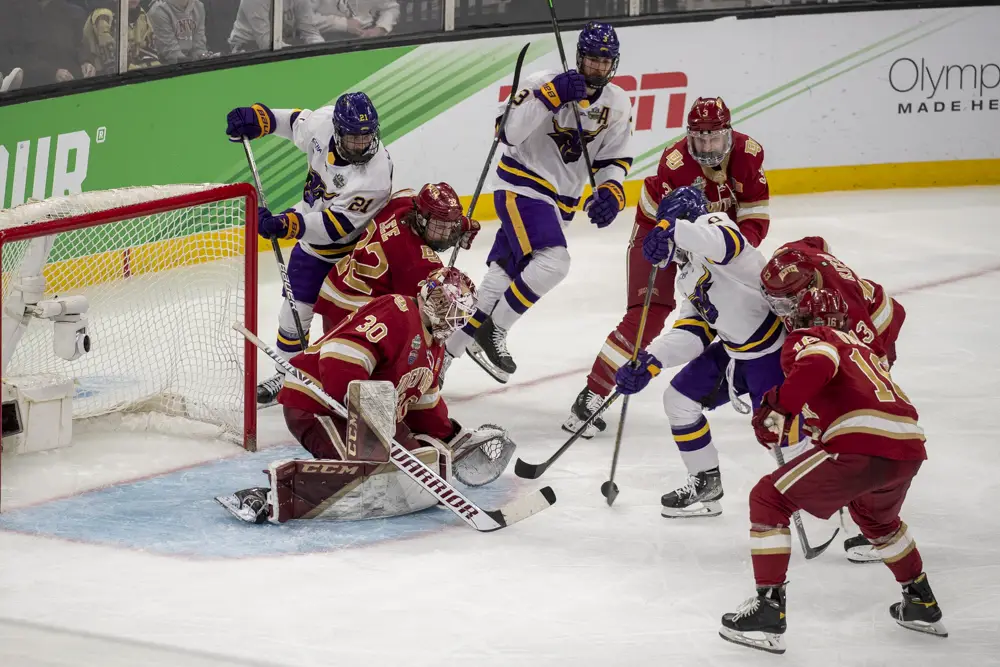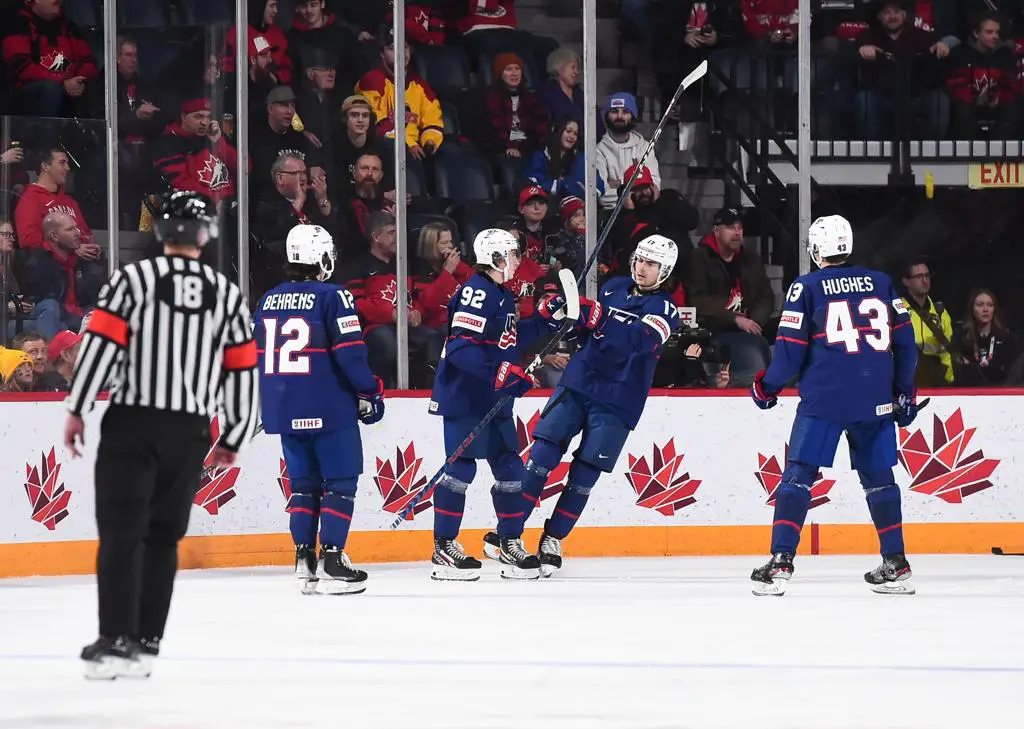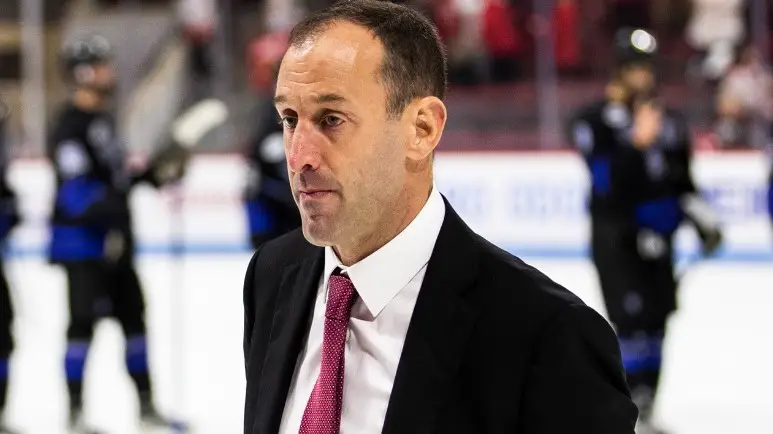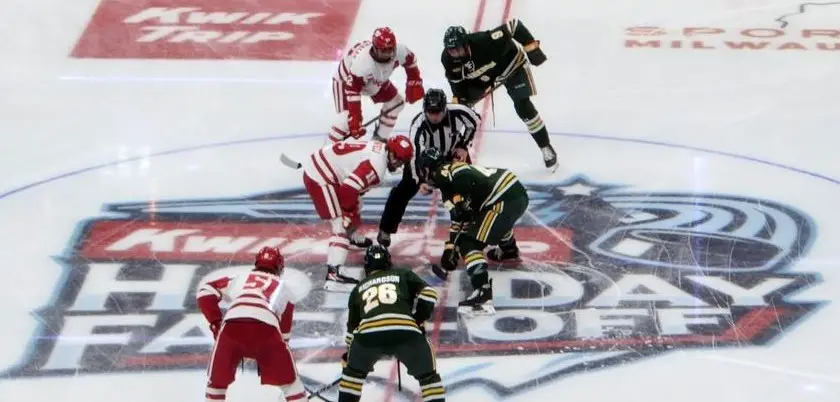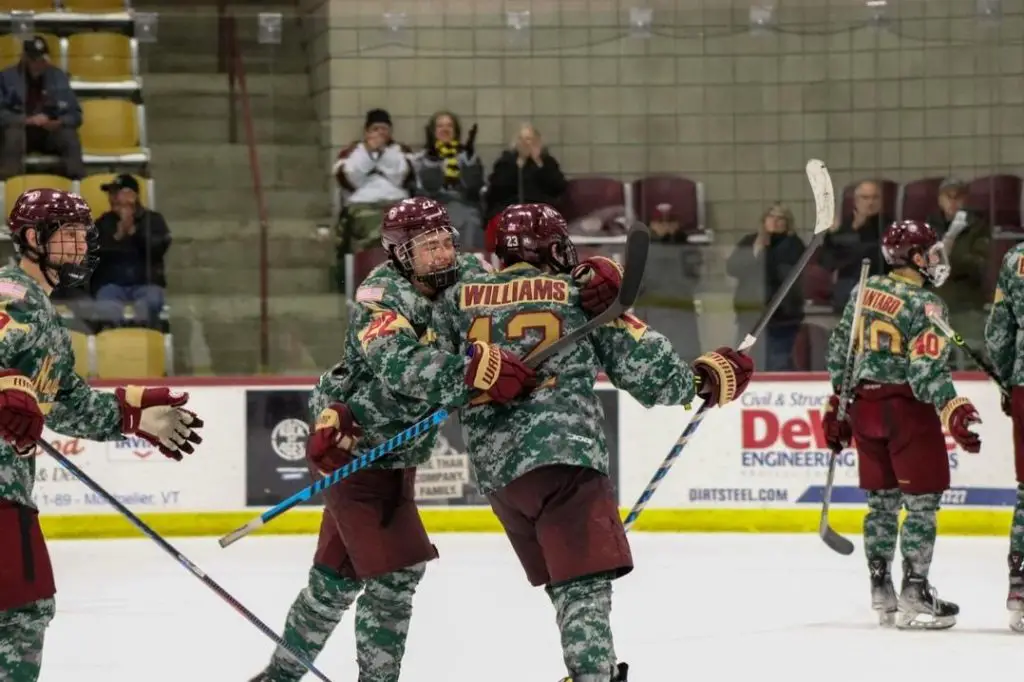
The great action continued this weekend and now there are no unbeatens in D-III hockey as Norwich snuck by Hobart, 2-1 on Saturday. Canton stunned Geneseo by the same score on Saturday as well and there were a host of other thrilling OT games and tight conference battles that spiced up the scoreboards this past weekend. Here is the wrap-up for the East:
CCC
After a thrilling overtime win over Anna Maria (see Independents section) on Friday night, Curry traveled to face Salve Regina in CCC action on Saturday. A playoff atmosphere was present as both teams challenged the goaltenders but no one could break the ice in the first two periods of play. In the third period, Nick Favaro finally solved the Seahawks’ Anthony Del Tufo for the one goal that would stand up as the game winner in a 1-0 final. Goaltender Reid Cooper was outstanding for the Colonels stopping all 34 shots he faced as Salve Regina outshot Curry by a 34-23 margin for the game. The win moved Curry to 11-2-0 overall and 7-2-0 in CCC play.
Nichols played host to the Boston Landing Collegiate Invitational tournament over the weekend and skated away with the championship with wins over Rivier and Brockport over the weekend. On Saturday, the Bison took advantage of third period goals from Luke Harvie and Nathan Carl to break a 2-2 tie on the way to a 4-2 first round win over the Raiders. On Sunday, Nichols faced Brockport who knocked off Lebanon Valley in the first round for the championship. Trailing 2-1 midway through the second period, Carl would jumpstart the Bison with a shorthanded goal to tie the game at 2-2. Josh Dickson would give Nichols the lead before the end of the second period and in the third period Carl picked up his second of the game, also shorthanded and Hunter Fraser finished the scoring with a power play goal and a 5-2 win for the tournament title. Goaltender Mathias Backstrom made 24 saves in the win and earned tournament MVP honors for the Bison.
Independents
After being dominated in a 7-0 whitewash at the hands of Geneseo on Friday night, Canton rallied to play a terrific hockey game and knocked off the Knights in the second game of the weekend series. Evan Pringle gave the Kangaroos a 1-0 lead after the first period and the score held through the second period with Canton playing an energetic game and goaltender Hooper Kelson playing great. Peter Morgan tied the game for the Knights just over a minute into the third period but Canton stayed resilient and with just under ten minutes remaining in regulation, scored the game-winning goal off the stick of Filip Jakobsson and a stunning 2-1 road win over Geneseo to split the weekend series.
Anna Maria played an overtime thriller on Friday night against Curry. The AmCats surged to a 3-1 lead in the first period only to see the Colonels rally back with three unanswered goals to take a 4-3 lead. With just over five minutes remaining in regulation, AMC’s Brandon Della Paoler stunned goaltender Roland Polasek with “a Michigan” goal from behind the right goal post and the game went to overtime tied at 4-4. In the extra session, Curry’s Timmy Kent scored an unassisted goal to give the Colonels a 5-4 win. On Saturday, the AmCats also found themselves in overtime against the Golden Bears from Western New England. Kyle Knight helped WNE to 2-1 and 3-2 leads with a pair of goals but AMC’s Matthew Byrne tied the game at 3-3 sending it to overtime. Pearce Baker wasted no time with his goal just 35 seconds into the extra session to give Anna Maria the win.
MASCAC
The big battle between Fitchburg State and Plymouth State proved to be a fireworks show that the Panthers ultimately pulled out the win with a three-goal third period. Tied at 4-4 entering the third period, Ted Austin scored his first of the season to break the tie and Connor Tait’s second goal of the game and Anton Jellvik’s late tally added insurance for the 7-4 win. Myles Abbate chipped in with three assists as the Panthers moved to 7-0 in MASCAC play. PSU continued their winning ways in MASCAC with a 4-0 win over Westfield State on Saturday. Cameron Patton scored two goals and goaltender Brendahn Brawley made 22 saves in the shutout win.
Zach Dill scored twice in the first eight minutes of play to jumpstart Salem State to a quick lead over Framingham State and the Vikings never looked back in a 6-3 win on Thursday night. Dill completed his hat trick with a second period goal in the first minute of play and added an assist for a four-point night to give the Vikings their first conference win of the season. On Saturday, the Vikings found themselves on the short-end of a 3-1 loss to Fitchburg State. Cole Archambeault and Wyatt Wilmshurst broke a 1-1 tie with goals in the third period for the Falcons win.
A big scoring night for Shane Prifrel also helped Worcester State to a 6-3 win over Massachusetts-Dartmouth on Thursday night. Prifrel scored twice in the first period, completed his hat trick with a second period goal and added two assists to lead the Lancers to the conference win. Massachusetts-Dartmouth rallied back with a 5-2 win over Framingham State on Saturday. Five different players provided the scoring for the Corsairs.
NE-10
After dropping a mid-week game to Bowdoin, St. Anslem returned to NE-10 play with a game against cross-town rival Southern New Hampshire. After a 1-1 score at the end of the first period, the Hawks reeled off five unanswered goals including two shorthanded tallies from Chase Reynolds and Luke Linart on the way to a comfortable 6-1 win.
NEHC
Norwich showed it is ready to play playoff-style hockey with a pair of 2-1 wins over Elmira and previously unbeaten Hobart over the weekend. The Cadets surrendered the first goal in both games only to rally back to earn the wins with Paul Schmid providing the game-winner against Elmira while Brady Gaudette scored the winning goal against Hobart. Goaltender Drennen Atherton was outstanding in both games stopping 60 shots in the two games, including 36 against the Statesmen on Saturday night. The wins moved Norwich closer to the top at 7-1-1 in NEHC play.
Skidmore also went 2-0-0 on the weekend with wins over Johnson & Wales and Massachusetts-Boston. On Friday night, the Thoroughbreds took advantage of four points from Kaeden Patrick on the way to a 5-2 win over the Wildcats. On Saturday, four different players helped Skidmore to a 4-1 lead in the third period and the Thoroughbreds had to survive a Beacons rally to hold on for a 4-3 win.
Babson needed a late power play goal from Andrew Holland and 30 saves from Nolan Hildebrand to eke past Southern Maine by a 3-2 score on Saturday night. The win was head coach Jamie Rice’s 300th and moved the Beavers to 5-2-2 in NEHC play.
NESCAC
Trinity picked up a pair of wins over the weekend in conference play. On Friday, the Bantams shutout Williams 3-0. A goa in each period and 22 saves from Devon Bobak was the formula for the shutout win. On Saturday, the Bantams had to rally from behind to down a determined Middlebury team by a 2-1 score. Nolan Moore gave the Panthers a 1-0 lead after two periods of play but goals from Andrew Troy and Devan Tongue earned the Bantams the win a weekend sweep in conference play.
Wesleyan downed Middlebury 6-2 on Friday night and then played a thrilling 3-3 overtime tie with Williams on Saturday. Four unanswered goals snapped a 2-2 tie for the Cardinals in Friday’s win while Saturday’s game saw Wesleyan take one-goal leads on three occasions only to see the Ephs rally back for the overtime tie.
After dropping a 3-2 decision on Friday to Bowdoin on Friday night for their first conference loss, Amherst rallied back on Saturday with a 3-0 road win against Colby. Matt Toporowski scored a pair of goals and Alex Wisco and Connor Leslie combined on the 28-save shutout for the Mammoths.
SUNYAC
With Wentworth the lone non-SUNYAC representative, Plattsburgh played host to the Comfort Inn Complex Winter Classic. While the first round saw the Cardinals easily handle Wentworth by a 5-2 score to reach the championship game, Oswego and Potsdam played a far more dramatic affair. The Bears took leads of 2-0 and 3-1 before the Lakers found goals from Jackson Arcan and Shane Bull to tie the score at 3-3. Goaltender Stephen Friedland was immense in goal as Oswego outshot Potsdam by a 55-29 margin. Overtime couldn’t decide the contest so a shootout was required to decide which team would face the host team for the championship. Cal Schell stopped all three Bears’ shooters while Rocco Andreacchi would solve Friedland for the shootout win.
In the championship game, Adam Tretowicz gave the Cardinals an early lead just under two minutes into the first period. Two power play goals from Daniel Colbuto and Quinn Warmuth, the second coming with just 33 seconds remaining in the period proved to be all the scoring Cal Schell and the Lakers would need to earn the 2-1 win and take home the tournament championship. Schell finished with 27 saves on the night to earn the win and tournament MVP honors for the Lakers.
UCHC
The marque match-up of the weekend was a hot Manhattanville squad going up against Utica in conference play. On Friday night, the game was as close as expected with neither team able to score in the first two periods of play. Jakob Breault broke the ice early in the third period for the Pioneers who needed empty-net goals from Buster Larsson and Lucas Hermann to seal a 3-0 win. Goaltender Bryan Landesberger made 21 saves to earn the shutout. On Saturday, the offense was more prevalent for both teams in a seesaw affair. The Valiants raced out to a 3-1 lead with second period goals from AJ Bella and Mason Emoff less than a minute apart but Breault would again be a big factor in a Pioneers rally. Breault scored two goals and added an assist as Utica scored four straight goals and held on for the 5-4 win and weekend sweep.
After a tough trip out west and losses to Trine and Adrian earlier in the week, Stevenson returned to UCHC play and swept a two-game series with King’s. On Friday, Liam McCanney’s two goals led to an offensive eruption for the Mustangs in an 8-1 win over the Monarchs. On Saturday night, McCanney and Alex Rivet helped Stevenson to an early 2-0 lead and Olson and Austin Master scored third period goals to seal a 4-1 win. With the wins Stenson moves to 7-8-0 overall and 3-5-0 in UCHC play.
Three Biscuits
AJ DiChiara – Bowdoin – backstopped the Polar Bears to a 4-0 shutout win over St. Anselm on Tuesday night stopping all 23 shots he faced.
Shane Pifrel – Worcester State – scored a hat trick and added a pair of assists for a five-point game in the Lancers 6-3 win over Massachusetts-Dartmouth on Thursday night.
Zach Dill – Salem State – recorded four points with a hat trick and an assist in the Vikings’ 5-3 win over Framingham State on Thursday night. Dill also won 74% of his face-offs on the night.
Bonus Biscuits
Reid Cooper – Curry – stopped all 34 shots he faced in backstopping the Colonels to an important road win over Salve Regina by a 1-0 score on Saturday night.
Daniel Friedland – Potsdam – stopped 52 of 55 shots in helping Potsdam earn a 3-3 overtime tie with Oswego on Friday afternoon.
Kaeden Patrick – Skidmore – scored two goals and added a pair of assists for a four-point game in Skidmore’s 5-2 win over Johnson & Wales on Friday.
The results never cease to amaze and if you don’t like the polls or the standings, just wait another weekend because it is all subject to change. The level of competition is exactly what everyone wants to see so get ready for a fast and furious finish to the regular season and what should be an immense playoff run.

